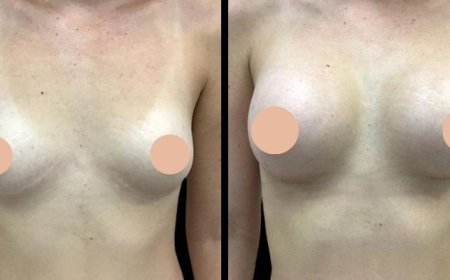The Art of Choosing Independent Living Products for Loved Ones
This guide will help you navigate this journey with compassion and confidence, making informed choices tailored to the unique needs of your loved one.

As our loved ones age or face life with disabilities, one of the greatest gifts we can offer them is the ability to live independently with dignity, safety, and comfort. Independent living doesnt mean doing everything aloneit means having the right support systems in place to live life on ones own terms. Choosing the rightindependent living products is a vital step in making that happen.
But with hundreds of products on the marketfrom grab bars to voice-activated assistantsthe selection process can feel overwhelming. What works for one person may not be suitable for another. Thats why choosing the right independent living products is as much an art as it is a science.
Understanding the Need: Not All Independence Is the Same
Before diving into product catalogs or online searches, start by understanding what independence looks like for your loved one.
Ask yourself:
-
What are their daily routines?
-
Where do they struggle the most?
-
Are they tech-savvy or prefer low-tech solutions?
-
What is their current physical and cognitive ability?
Independence could mean safely taking a shower without assistance, being able to cook a simple meal, or moving freely around the house without fear of falling. For others, it might involve staying connected with family via technology or managing medications accurately.
This step is crucial because the products should serve their lifenot the other way around.
Step 1: Involve Your Loved One in the Process
This cant be overstated: include your loved one in decision-making. Even if cognitive or physical limitations exist, asking for their input and preferences preserves dignity and ensures better adoption.
Here are some ways to involve them:
-
Visit showrooms together or look at product images/videos online.
-
Ask them what part of their routine feels frustrating or unsafe.
-
Discuss their aesthetic preferences (many dont like products that look too clinical).
Respect goes a long way. You're not just buying equipment; you're supporting a lifestyle choice.
Step 2: Prioritize Safety and Daily Functionality
When choosing independent living aids, prioritize the most essential areas that impact safety and daily function. Generally, these fall into several core categories:
1. Mobility Aids
-
Walkers, canes, rollators
-
Stair lifts, ramps
-
Transfer benches or swivel cushions
2. Bathroom Safety Products
-
Grab bars
-
Shower chairs
-
Raised toilet seats
-
Non-slip mats
3. Kitchen Aids
-
Easy-grip utensils
-
Automatic shut-off kettles
-
Jar openers and adaptive cooking tools
4. Bedroom and Living Space Enhancements
-
Adjustable beds
-
Bed rails
-
Recliners with lift-assist
5. Technology for Independence
-
Voice assistants (e.g., Alexa or Google Home)
-
Smart doorbells and home monitoring
-
Medication reminder systems
Look for multi-functional items when possible. For example, a walker with a built-in seat can double as a resting point when needed.
Step 3: Think Long-Term
While immediate needs should be met first, its wise to think a step ahead. Choose products that can adapt as your loved ones needs evolve.
Look for:
-
Adjustable heights or settings
-
Modular designs (can add or remove parts)
-
Compatibility with other assistive technologies
A grab bar that doubles as a towel holder is a simple example of this design thinkingits useful now and continues to be helpful as mobility needs increase.
Step 4: Match Products with Personality
Its easy to forget that assistive products become part of someones personal environment. A mismatched productvisually or functionallymay feel intrusive or even embarrassing for the user.
Consider:
-
Colors and styles that blend with home decor
-
Discreet or minimalist designs
-
Products that dont scream disability
This can improve emotional acceptance and make the transition smoother. After all, confidence is a big part of independence.
Step 5: Research, Review, and Compare
Not all products are created equal. Once youve identified the category of need, take time to compare options, read reviews, and understand the pros and cons.
Key questions to ask:
-
Is it medically recommended?
-
Are there user reviews from caregivers or seniors?
-
Is it covered by insurance or eligible for reimbursement?
-
How easy is it to return or exchange?
You can often find product demonstrations on YouTube, independent blogs, or forums where caregivers share experiences.
Step 6: Test Before You Invest
Whenever possible, try before you buy. Many equipment suppliers and medical supply stores offer demo models. Some even offer rental options for high-cost items like stair lifts or hospital beds.
Trying the product helps:
-
Ensure correct sizing (especially for mobility aids)
-
Check ease of use and installation
-
Gauge the users comfort and reaction
This hands-on approach can prevent costly mistakes and ensure the product is a good fit.
Step 7: Consider Professional Assessments
In some cases, especially after an injury or surgery, a home safety assessment by an occupational therapist or senior care consultant can be invaluable.
They evaluate:
-
Risk zones in the home
-
Specific product recommendations
-
Ergonomic fit for the user
This personalized approach ensures youre not just guessing, but making evidence-based choices tailored to your loved ones needs.
Step 8: Dont OverwhelmStart Small
A common mistake is trying to overhaul everything at once. Too many changes can overwhelm the user and lead to resistance.
Start with one or two high-impact items. As your loved one becomes more comfortable, gradually introduce others.
For example:
-
Start with a shower chair and grab bar.
-
Later add a handheld shower head or transfer bench.
Each new product should build on trust and make life easiernot more confusing.
Step 9: Installation and Training Matter
Proper installation is just as important as choosing the right product. A poorly installed grab bar or improperly adjusted walker can be more dangerous than helpful.
Ensure that:
-
Products are installed according to instructions
-
Weight limits are respected
-
Your loved one knows exactly how to use them
Dont just set it up and walk awaydemonstrate usage, observe practice, and answer questions. If possible, involve a physical or occupational therapist during setup.
Step 10: Monitor and Adjust
The process doesnt end once the products are in place. Regularly check in to see:
-
Is the product being used?
-
Is it still meeting their needs?
-
Has their condition changed?
Be ready to make adjustments. Sometimes, products that worked initially may become redundant or need replacement as your loved one becomes more confidentor experiences a decline.
A responsive, flexible approach is key to maintaining safety and independence over time.
Final Thoughts
At its core, the art of choosing independent living products is about empowermentgiving someone the tools they need to thrive. Its a delicate blend of practicality and empathy, functionality and dignity.
Youre not just shopping for gadgets. Youre crafting a lifestyle of self-respect, comfort, and peace of mind.
By listening carefully, involving your loved one, and approaching the process with thoughtful planning, you can make choices that truly transform everyday livingsafely, respectfully, and with love.
































